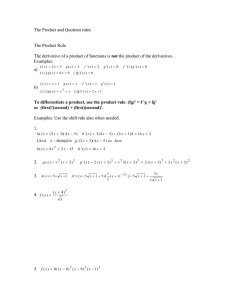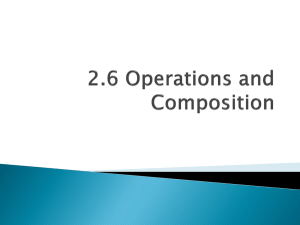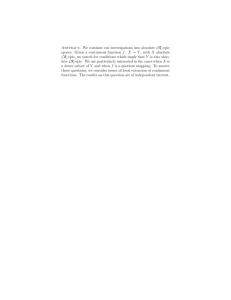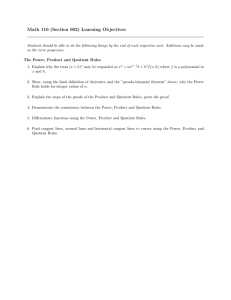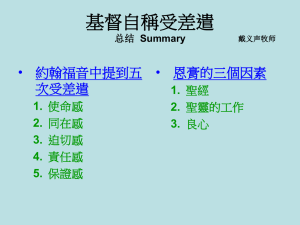Section 3.2 The Product and Quotient rules not Examples:
advertisement
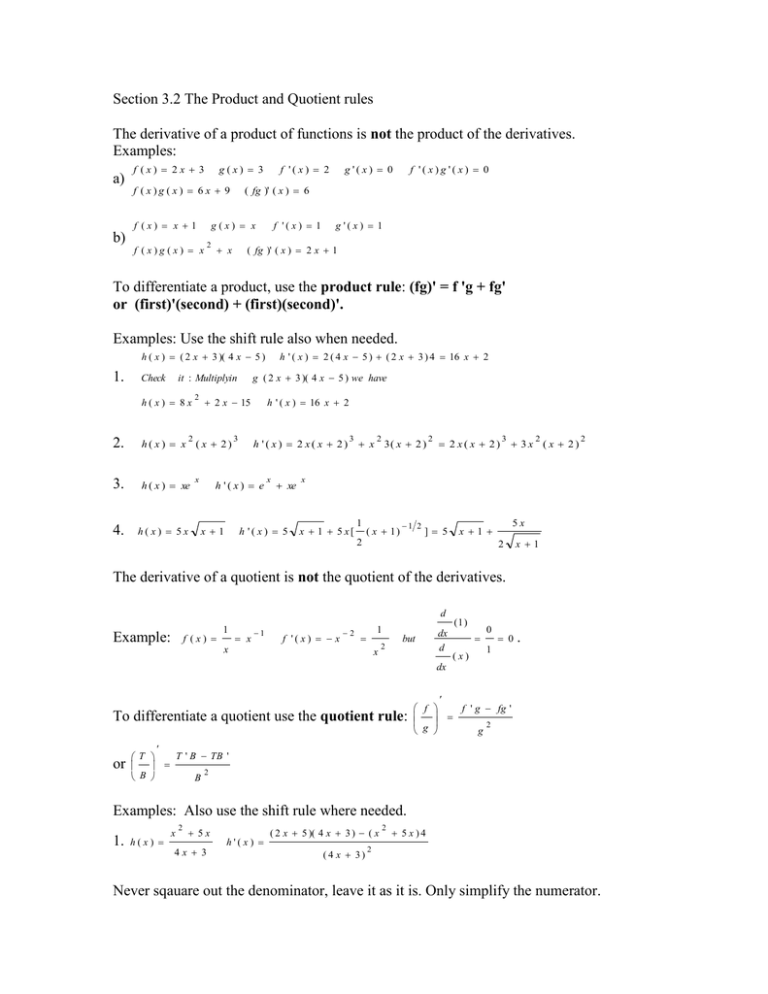
Section 3.2 The Product and Quotient rules The derivative of a product of functions is not the product of the derivatives. Examples: a) f (x) 2x 3 g(x) 3 f (x)g(x) 6x 9 f (x) x 1 b) f '(x) 2 2 f '( x)g '( x) 0 ( fg )' ( x ) 6 g(x) x f (x)g(x) x g '( x) 0 x f '( x) 1 g '( x) 1 ( fg )' ( x ) 2 x 1 To differentiate a product, use the product rule: (fg)' = f 'g + fg' or (first)'(second) + (first)(second)'. Examples: Use the shift rule also when needed. h ( x ) ( 2 x 3 )( 4 x 5 ) 1. Check g ( 2 x 3 )( 4 x 5 ) we have it : Multiplyin h(x) 8x 2 2 x 15 2 2. h( x) x ( x 2) 3. h ( x ) xe 4. h(x) 5x x 3 h ' ( x ) 16 x 2 h '( x) 2 x( x 2) h '( x) e x 1 h ' ( x ) 2 ( 4 x 5 ) ( 2 x 3 ) 4 16 x 2 x xe h '( x) 5 3 2 x 3( x 2 ) 2 2 x( x 2) 3 2 3x ( x 2) 2 x x 1 5 x[ 1 ( x 1) 1 2 ] 5 5x x 1 2 2 x 1 The derivative of a quotient is not the quotient of the derivatives. d Example: f (x) 1 x 1 f '( x) x 2 1 x x 2 but dx d (1 ) (x) 0 0 . 1 dx To differentiate a quotient use the quotient rule: or f f ' g fg ' 2 g g T ' B TB ' T 2 B B Examples: Also use the shift rule where needed. 1. h(x) x 2 5x 4x 3 h'( x) ( 2 x 5 )( 4 x 3 ) ( x (4 x 3) 2 5 x )4 2 Never sqauare out the denominator, leave it as it is. Only simplify the numerator. 2. h(x) ( x 1) e x 2 h'( x) 2 ( x 1 )( e x x 2 x ) ( x 1) ( e (e x x) x 1) 2 3. This example shows some quotients can be written as products and then differentiated using the product rule. h(x) e x Re write h(x) x x Using the quotient rule h'( x) xe x x e 2 x 1 e x Use the product rule , h'( x) x 2 e x x 1 e x
